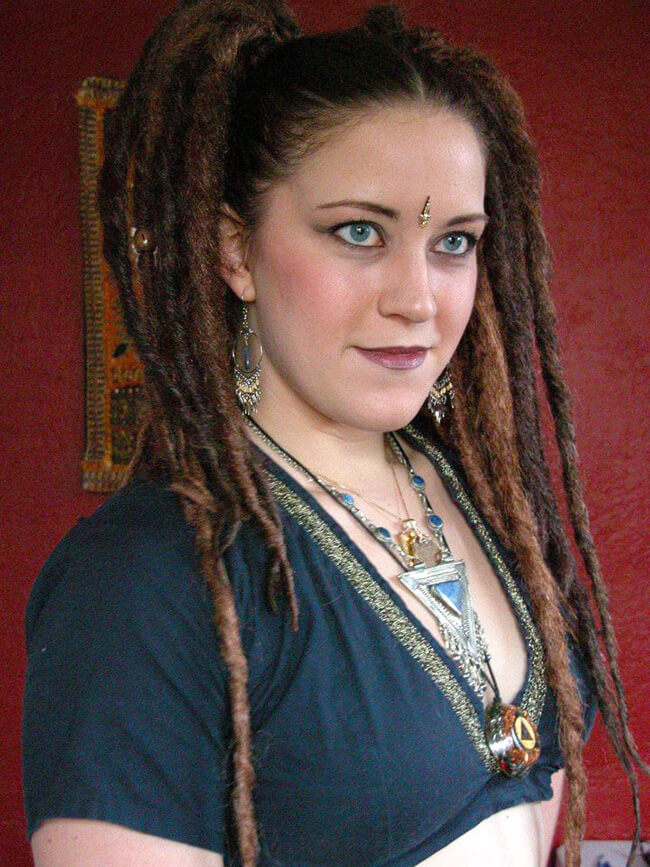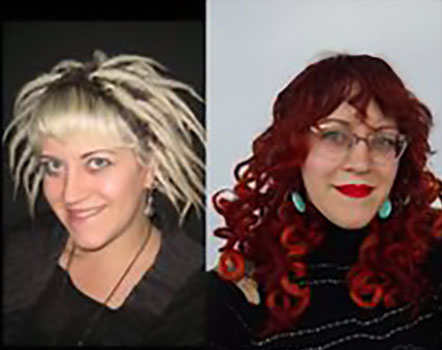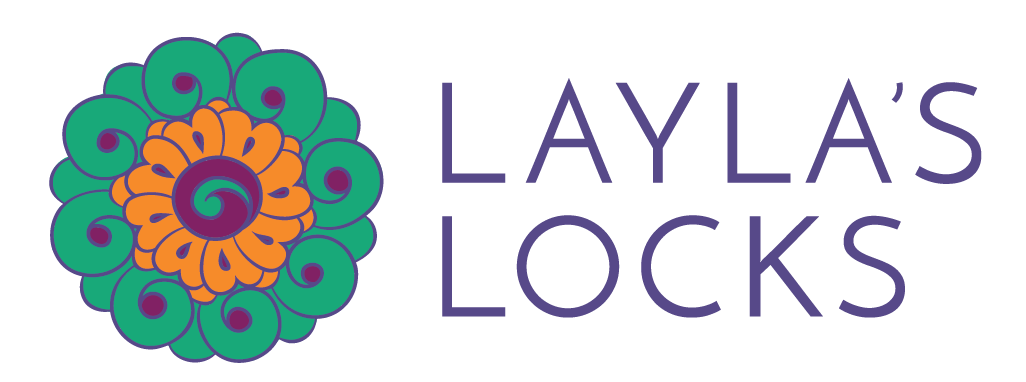Locs: My Personal Journey
My Personal Journey
Loced hair is a style that is so filled with personal meaning, yet entangled with issues of race, privilege, and culture. My intention here is to present a complete story of my own journey, as well as some of my own feelings about its inherent controversy in the context of these transformational times that we are living through. I welcome your questions, comments, and insights because growing my knowledge of this subject is a process that I never want to stop. Locs can simultaneously repel and attract the energy of others. They inspire both judgement and camaraderie. If you are contemplating your own journey, I hope that my words can express the fullness of that experience.
Because my purpose is to share my personal story and not the history of the style, here are few different takes on the history of Locs:
Links:

My Early Inspiration
My Loc journey began years before I made my first synthetic locs in 2004, as a child of the 80’s. My first exposure to the hairstyle was seeing it on black celebrities. There was of course the iconic Bob Marley who wore his natural dreadlocks proudly as part of his Rastafarian beliefs, but my real loc crush was Whoopi Goldberg. She was a bold enough woman to rock a natural style in the 80’s when the pressure to have “good hair” as a black woman was just starting to get pushback from people like her and Grace Jones. As a child, my fascination was mostly about the mechanics of the style. How did their hair stay in those discrete sections? Was there some kind of filler that made it so thick? Was it only for black people? Could it be for me?
It wasn’t until years later, in my 20’s that I started to see locs on people with hair like mine. I was a rave DJ in the early 2000’s, and that counterculture was filled with inspiration for alternative looks. After seeing Groove: The Movie in the theatre when it came out in 2000, DJ Pollywog’s voluminous locs were a confirmation that the style could be for me. It was further confirmed as I became involved in the Tribal Bellydance scene. In 2004, I went to my first performance of the Bellydance Superstars, and two out of the three dancers in the Tribal fusion troupe had gorgeous long locs. Melodia Medley, a caucasian woman, and Sharon Kihara, a woman of both Japanese and European descent, both had gorgeous, waist length locs. When I saw these dramatic ropes of hair moving in synch with the dance, I was mesmerized. Their hair was like mine, and now I knew for sure it was possible.
I was part of a bellydance troupe at the time called Tribalation, and thanks to the looks we saw on that stage, a big trend in costuming was creative hair falls. Our troupe had a photoshoot and one of my troupe mates, and really talented costumer Joy, gifted me one of her custom made hair pieces. It had all sorts of materials, yarn, beads, braids and locs. I quizzed her on how she did it, where she got the materials, and I remember going home and almost immediately beginning to reverse-engineer it and figure out how to make it myself.
My Business Journey
In 2005, I officially started my business, Layla’s Locks, and the first version of laylaslocks.com launched. I was focused on creating hair falls for bellydancers and other performers, including fire and hoop dancers. I took custom orders, and developed my techniques to the point where I was known for creating highly realistic, color matched loc falls. My customers were both close to home, and as far away as the UK and Australia. I also dipped my toe into the world of vending at bellydance festivals, but found out quickly that it wasn’t for me. My interests were now turning to working on clients in person. I started braiding in synthetic locs on my own head, and for some friends on their way to festivals like Burning Man or Country Fair. It was at this point in my journey that I was strongly encouraged to go to beauty school.
So in 2007, at age 30, I took the plunge and began studying for my license in hair design, which I earned in 2008. I started my first salon job that fall and it was then I began my trial and error, autodidactic journey of learning to loc and maintain human hair. At the time, information online was sparse (youtube had only just launched in 2005), but I had developed a feeling for the process thanks to working on synthetic dreads, and sectioning hair for braiding them in.
In the intervening years, I gained a diverse hair clientele and loved my work cutting and coloring hair as much as I loved working with locs. In fact, it allowed me to be more fully rounded and able to complete a loc style with a nice fringe trim, undercut, or color, and sometimes all of the above.
My Natural Locs
I started my personal loc journey in December of 2009. I was wearing braided in synthetic extensions, took them out the same day, and used the sections as sectioning for my locs. I had two stylists from my salon helping with the process, one who had a lot of experience with locs and another who was still learning. Each of my baby locs was blessed with a base tie, and a felting needle was used to create knots. About a month later, my locs were also blessed by the pacific ocean on a family trip to Mexico. Did I mention that my hair was bleached within an inch of its life and only about 5-6 inches long?
What I just listed was a litany of mistakes that I made starting my locs. Unbraiding and then locing hair caused me a ton of pain on that first day. Felting needles, while they achieve a knotted look, also shred the hair to a greater degree, eventually causing breakage, and my extremely processed hair was a particularly bad candidate for it. On my trip to Mexico, submerging my head in the ocean actually caused a couple of my locs to come completely undone. Despite all that, my locs would go on to become beautifully mature thanks to my own self care and dedication to the style.

Early in my journey, I continued to play with color, extensions, and texture. I did my first curl set with sponge rollers about 4 months in, after coloring a “shadowbox” of light brown at the nape. My journey around the color wheel eventually came to a stop in the red family after reviewing a number of different looks and determining that I liked it the best. I would braid in blonde extensions as highlights to avoid further chemical damage, although I would eventually return to bleaching my hair, Breakage due to color mishaps would continue for at least a few more years, and if I’m perfectly honest, it still does, but it doesn’t bother me as much as it used to.
As time went on, I also started feeling the literal weight of the style on my neck, and so I began to part with some of my locs starting with an undercut, then moving up the sides and around to the fringe section that I had originally left out. I currently have no part of my hairline loced up and I love it! I can play with color and style in my fringe area without damaging my locs and it keeps the style interesting to me. I also trim the length at least once a year, keeping the straight length about mid back to save strain on my body.
My curled locs are also something of a fascination to people who say they’ve never seen it before. I have to remind them that they’ve only never seen it on a white person before, since my own journey into this kind of styling was inspired by the amazing diversity of style in black hair. It was actually born out of a necessity to look a bit more “professional” in my other job as a wedding MC. For 16 years, my husband and I were co-owners of TrueLove Sound, a wedding entertainment company. We were building this business concurrently with my own hair career, and at about 5 years into my loc journey, I couldn’t hide my locs in a french twist anymore, and creating loc curls felt like the next logical step. They were a hit! They looked fun, formal, and even the grandmas liked them. These days I don’t feel like myself without them.
And my style continues to evolve and change, but I always tell people, as a hairdresser, it’s my job to have interesting hair, and to keep refreshing my look as an inspiration to my own clients, and ultimately to myself.
In this personal accounting, there was only one place where I found myself needing to change the appearance of my hair to look more “professional,” and that was in the world of weddings. I keep that word in quotes because unfortunately, that has been a word used to rob black people of their own ability to wear this style that represents convenience as much as it does fashion (and sometimes so much more). The fact that I am able to enjoy locs as an artistic and stylistic endeavor as a white passing person (I have Palestinian, English and German heritage), is not a reality that is lost on me. To this day, hair discrimination exists and excludes black Americans from sports, education, and employment. There are many strides being made towards ending this discrimination, and if you’re interested in how to support these efforts, The Crown Act is a great place to start.
